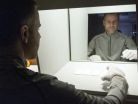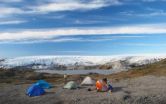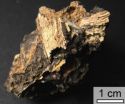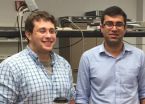Under some LED bulbs whites aren't 'whiter than white'
2014-04-18
(Press-News.org) For years, companies have been adding whiteners to laundry detergent, paints, plastics, paper and fabrics to make whites look "whiter than white," but now, with a switch away from incandescent and fluorescent lighting, different degrees of whites may all look the same, according to experts in lighting.
"Retailers have long been concerned with the color-rendering qualities of their lighting, but less aware how light sources render white," said Kevin W. Houser, professor of architectural engineering, Penn State.
Not long ago, the only practical choices for home, office or commercial lighting were incandescent or fluorescent bulbs. More recently, compact fluorescent bulbs, which use less energy than incandescent bulbs, became popular, but compact fluorescents are not always accepted by consumers because of poor color rendition, lack of dimability, slow warm-up to full output and because they contain mercury.
The most recent popular entry into home or commercial lighting are light-emitting diode (LED) bulbs, which while currently expensive, are often even more energy-saving than compact fluorescents.
While some LED bulbs will make colors pop, the vast majority do not showcase or differentiate the appearance of white products, according to Houser, because all white light is not the same.
Different light sources contain different combinations of the wavelengths of light. A broad variety of wavelengths will create light that appears white to the human eye, but different mixtures of wavelengths will affect how colors are rendered. When it comes to seeing the color white, the light source is very important because of how product manufacturers make white products appear white using whiteners.
Whiteners contain fluorescent materials that glow under violet and ultraviolet light. Sunlight, fluorescent light and incandescent light all produce some light in the violet and ultraviolet range. The whiteners used in consumer products work under those conditions, resulting in a bright white perception.
However, most current LED bulbs use blue LEDs to excite a phosphor that then glows white, but produces no violet or ultraviolet light.
Houser, working with a Penn State student and researchers from Soraa Inc. of Fremont, Calif., asked 39 participants to observe various combinations of light sources and white objects to see how the light source affected perceptions of white. They report their results in a recent issue of Leukos, the journal of the Illuminating Engineering Society.
The participants completed three tests -- selection, forced choice and sorting -- using five different light sources -- a blue-pumped LED, filtered halogen lamp and three violet-pumped LEDs with differing levels of violet emissions.
In the sorting experiment, the researchers placed six calibrated whiteness cards of varying whiteness on a table in a booth enclosed on three sides. They asked participants to arrange the cards in order of whiteness under each of the five light sources.
Under the halogen light and violet-pumped LED lights with 7 and 11 percent violet emission, the order was correct. Two of the cards were flipped under violet-pumped LEDs with only three percent violet emissions.
"With the LED but only blue pumping the phosphors, the order became random," said Houser. "People simply couldn't tell the difference between the cards. Under the blue-pumped LED, which is notable because blue-pumped LEDs are by far the most common type for general lighting."
In the forced choice test, two nominally identical cards were placed in each of two booths containing different light sources. Participants were asked to choose the card that was whiter under all of the permutations of each of the five light sources.
"The light sources with higher violet component permitted the best discrimination between the targets," said Houser.
In the selection test, researchers asked the participants to look at a reference card in one booth and rank the cards in a second booth as either as white or whiter than the reference card. Again the blue-pumped LEDs did not fare well.
The researchers note that "engineering of an LED source's spectrum is necessary for an accurate rendering of whiteness."
INFORMATION:
Other researchers on this project were Minchen Wei, graduate student in architectural engineering, and Aurélien David and Michael Krames, Soraa Inc.
Soraa Inc. funded this study.
ELSE PRESS RELEASES FROM THIS DATE:
Frozen in time: 3-million-year-old landscape still exists beneath the Greenland ice sheet
2014-04-18
Some of the landscape underlying the massive Greenland ice sheet may have been undisturbed for almost 3 million years, ever since the island became completely ice-covered, according to researchers funded by the National Science Foundation (NSF).
Basing their discovery on an analysis of the chemical composition of silts recovered from the bottom of an ice core more than 3,000 meters long, the researchers argue that the find suggests "pre-glacial landscapes can remain preserved for long periods under continental ice sheets."
In the time since the ice sheet formed "the ...
Impact glass stores biodata for millions of years
2014-04-18
PROVIDENCE, R.I. [Brown University] — Asteroid and comet impacts can cause widespread ecological havoc, killing off plants and animals on regional or even global scales. But new research from Brown University shows that impacts can also preserve the signatures of ancient life at the time of an impact.
A research team led by Brown geologist Pete Schultz has found fragments of leaves and preserved organic compounds lodged inside glass created by a several ancient impacts in Argentina. The material could provide a snapshot of environmental conditions at the time of those ...
'Dressed' laser aimed at clouds may be key to inducing rain, lightning
2014-04-18
The adage "Everyone complains about the weather but nobody does anything about it," may one day be obsolete if researchers at the University of Central Florida's College of Optics & Photonics and the University of Arizona further develop a new technique to aim a high-energy laser beam into clouds to make it rain or trigger lightning.
The solution? Surround the beam with a second beam to act as an energy reservoir, sustaining the central beam to greater distances than previously possible. The secondary "dress" beam refuels and helps prevent the dissipation of the high-intensity ...
First Earth-size planet is discovered in another star's habitable zone
2014-04-18
A team of astronomers that includes Penn State scientists has discovered the first Earth-size planet orbiting a star in the "habitable zone" -- the distance from a star where liquid water might pool on the surface of an orbiting planet. The discovery was made with NASA's Kepler Space Telescope. The discovery of this Earth-size planet, now named Kepler-186f, confirms -- for the first time -- that planets the size of Earth exist in the habitable zone of stars other than our Sun.
Some planets previously had been found in the habitable zone, but they all were at least 40 ...
Scientists discover brain's anti-distraction system
2014-04-18
Two Simon Fraser University psychologists have made a brain-related discovery that could revolutionize doctors' perception and treatment of attention-deficit disorders.
This discovery opens up the possibility that environmental and/or genetic factors may hinder or suppress a specific brain activity that the researchers have identified as helping us prevent distraction.
The Journal of Neuroscience has just published a paper about the discovery by John McDonald, an associate professor of psychology and his doctoral student John Gaspar, who made the discovery during his ...
New research shows people are thinking about their health early in the week
2014-04-18
San Diego, Calif. (April 18, 2014) ― A new study in the American Journal of Preventive Medicine analyzing weekly patterns in health-related Google searches reveals a recurring pattern that could be leveraged to improve public health strategies.
Investigators from San Diego State University, the Santa Fe Institute, Johns Hopkins University, and the Monday Campaigns, analyzed "healthy" Google searches (searches that included the term healthy and were indeed health-related, e.g., "healthy diet") originating in the U.S. from 2005 to 2012. They found that on average, ...
New clues on tissue scarring in scleroderma
2014-04-18
A discovery by Northwestern Medicine scientists could lead to potential new treatments for breaking the cycle of tissue scarring in people with scleroderma.
Fibrosis, or scarring, is a hallmark of the disease, and progressive tightening of the skin and lungs can lead to serious organ damage and, in some cases, death.
The concept for new therapeutic options centers on findings made by Swati Bhattacharyya, PhD, research assistant professor in Medicine-Rheumatology, who identified the role that a specific protein plays in promoting fibrosis.
"Our results show how a ...
Pizza Maker - Cooking Games Made by Wizards Time LLC Now for iOS
2014-04-18
Wizards Time LLC announced that Pizza Maker - Cooking Games, cooking game for kids, is now ready for free download on iTunes. The game which is in the category of educational games, has made more than 50 000 downloads on Google Play Store. Due to the success, this game is now available to iOS users as well.
Pizza Maker is an educational and interactive game for kids made of three mini games. First of all, kids are to make pizza as similar as possible to the one given as a task. Users will have different ingredients for making and decorating pizzas. Also, users have ...
The Master Shift Presents-Earth Day Meditation Narrated By Julian Lennon, April 22, 2014
2014-04-18
The Master Shift provides Global meditations to uplift humanity using the power of positive focused thought. The meditations raise vibrational energy where spiritual healing is needed around the globe.
The world is invited to join in meditation for our planet on April 22, 2014. The Master Shift has fashioned an online guided meditation that will be narrated by Julian Lennon. Lennon, who has the same charismatic environmentalist approach as his father, has focused on how he can do his part and embrace the humanitarian issues that plague the planet. The meditation event ...
Ft Greene Sweetery Makes it Easy For Everyone To Pay It Forward!
2014-04-18
Brooklyn Sweet Spot announces the launch of their Random Acts of Sweetness Campaign. From April 18, 2014 - April 24, 2014 Brooklyn Sweet Spot is extending the sweetness beyond 366 Myrtle Avenue, with the launch of their Random Acts of Sweetness Campaign. Brooklyn Sweet Spot is providing participating Myrtle Avenue merchants with complimentary cupcakes to be "paid forward" to customers. The only string attached is customers must be willing to pass the random act of sweetness on and give the sweet treat to someone else, preferably a stranger.
April 24, 2014 marks National ...






